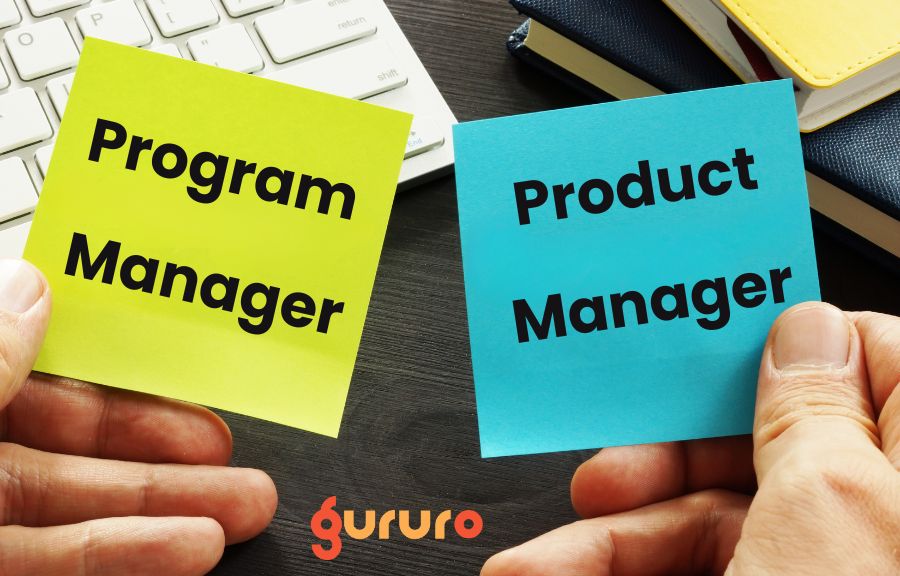Do you know Product Managers lead the execution of some projects within product organizations, rather than Program Managers?
Have you ever wondered about the differences between a Program Manager (TPM) and a Product Manager (PM)? While these roles often seem similar, they are distinct in their focus, responsibilities, and approach within organizations, especially in the tech world. Although both TPMs and PMs work closely with engineering and product teams, understanding their unique roles can clarify how they contribute to a product’s success.
At some point, many professionals consider transitioning into Product Management because of the overlap between these roles. However, the key differences set them apart. Let’s break down the similarities first and then dive into the nuanced differences between Program Managers (TPM) and Product Managers (PM) in this blog Program Manager vs Product Manager.
Similarities Between Program Managers (TPM) and Product Managers (PM)
Despite their differences, TPMs and PMs share several key characteristics. Here are the major areas where their responsibilities overlap:
Influence Without Authority
- Both TPMs and PMs operate as leaders without direct authority over engineering teams. They do not make the final engineering decisions but instead use influence to guide teams toward a common goal. For example, while frontline PMs may need to influence Group PMs or stakeholders for major decisions, TPMs work closely with team leads to ensure project execution stays on track.
Translation of Requirements
- Both roles are responsible for translating requirements into actionable tasks. PMs typically convert business needs and customer insights into user stories, while TPMs turn the technical requirements into issues and tasks to keep the execution process on track. Their ability to communicate effectively between teams is vital for project success.
Product Launch Responsibility
- TPMs and PMs both share the responsibility for the successful launch of a product. While PMs may focus on ensuring the product aligns with market needs, TPMs ensure that the product’s technical implementation and development milestones are met on time.
Process-Driven and Schedule-Oriented
- Both TPMs and PMs are deeply process-oriented. They ensure that workflows, timelines, and schedules are followed to meet deadlines. This shared focus on efficiency and organization helps them keep teams aligned and progress steady.
Creativity and Organization
- To succeed in their roles, TPMs and PMs need to be creative problem-solvers. Whether it’s identifying user needs (PMs) or ensuring technical feasibility (TPMs), they must think critically and innovate to address challenges that arise during the product lifecycle.
Strong Communication Skills
- Both roles rely heavily on effective communication. Whether drafting clear project documentation, writing user stories, or communicating priorities to stakeholders, strong writing and verbal communication are essential for both TPMs and PMs.
Key Differences Between Program Manager (TPM) and Product Manager (PM)
While TPMs and PMs share many similarities, their core responsibilities differ significantly. Below are the most important distinctions:
Focus on Execution vs. Strategy
- Product Managers (PMs) are responsible for the overall product strategy—researching market needs, crafting a product vision, and advocating for their product’s development. In contrast, Program Managers (TPMs) focus on executing approved projects. While PMs fight to get their product proposal or PRD (Product Requirements Document) approved, TPMs step in to oversee project execution once the green light is given.
Customer-Centric vs. Execution-Centric
- PMs tend to have a more outward-facing role, focusing on understanding customer pain points and aligning product features with market demands. They often spend time observing user behavior, conducting market research, and speaking with stakeholders to build a compelling product vision. On the other hand, TPMs are more internally focused, dealing primarily with the technical execution of the product, from managing resources to meeting deadlines.
Business of Products vs. Execution of Products
- A PM’s role revolves around the business side of product management, which includes defining the product roadmap, identifying key features, and ensuring the product meets both market demands and business objectives. TPMs, however, are concerned with the technical execution of the product. This includes handling requirements, scope, prioritizing features, and managing the resourcing, budget, and timelines to bring the product to market.
Product Roadmap vs. Features and Bugs
- PMs are typically roadmap-oriented, focusing on long-term product development strategies and key milestones. They look at the broader picture to ensure their product fits into the company’s vision and the market’s future needs. TPMs, on the other hand, are execution-oriented, dealing with the day-to-day progress of a product’s development, managing bugs, and ensuring that features are implemented according to plan. TPMs are also responsible for monitoring product performance post-launch to ensure that it functions as expected.
| Aspect | Program Manager (TPM) | Product Manager (PM) |
| Focus | Execution of approved projects | Strategy and vision for product development |
| Role Orientation | Internal, execution-centric | External, customer-centric |
| Main Responsibility | Managing technical requirements, scope, resources, and deadlines | Defining product strategy, roadmap, and feature set |
| Key Output | Execution of features, bug fixes, and performance improvements | Product ideation, market fit, and business alignment |
| Decision-Making Authority | Responsible for executing approved projects | Negotiates for product proposals to be approved |
| Process Involvement | Focused on ensuring smooth technical implementation | Focused on aligning product with customer and business needs |
| Time Orientation | Short-term focus on current projects and execution | Long-term focus on product vision and market strategy |
| Scope | Ensures project stays within scope, budget, and timeline | Manages product scope to align with business objectives |
| Communication Focus | Coordinates technical teams to ensure execution | Engages with customers, stakeholders, and market trends |
| Measurement of Success | On-time project delivery, meeting performance metrics | Product market fit, user adoption, and revenue growth |
Why Do These Differences Matter?
Understanding the difference between a Program Manager and a Product Manager can help organizations better define roles and expectations within their teams. For those considering a career in either field, recognizing whether your skills are more aligned with product strategy or project execution can help you determine which path is right for you.
In product-driven organizations, having clear distinctions between these roles allows for more effective collaboration and a smoother development process, ensuring that both strategic vision and technical execution are managed appropriately.
Conclusion: Program Manager vs Product Manager
Both Program Managers (TPMs) and Product Managers (PMs) play essential roles in the development and launch of successful products. While their responsibilities overlap in many areas, their focus is distinct—PMs on product strategy and customer needs, and TPMs on the execution and delivery of projects. Understanding these differences is crucial for ensuring that products are both well-designed and effectively implemented.











